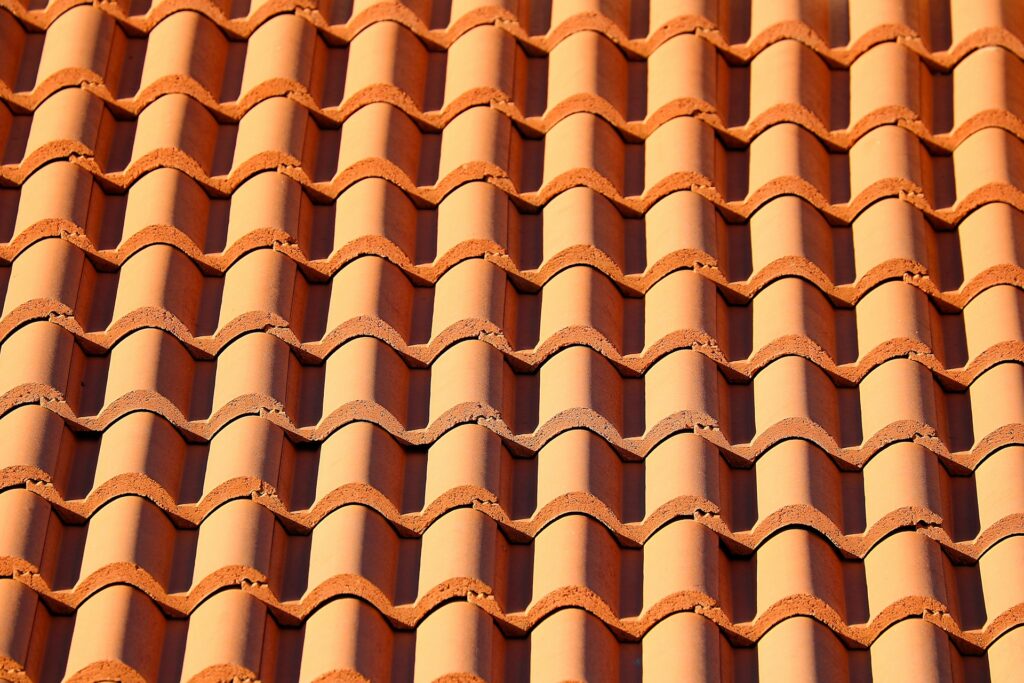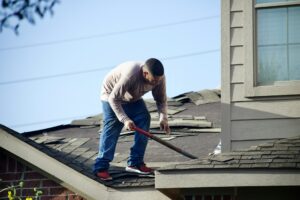Tile roofs often spark thoughts of timeless beauty and steadfast durability. In Oregon, where damp winters and mild summers shape the local climate, clay and concrete tile roofs offer a unique blend of strength, insulation, and style. Far from being a fleeting trend, tile roofing fits the region’s dynamic nature and offers homeowners peace of mind. Below, we explore key advantages of clay and concrete tiles, showing how they harmonize with Oregon’s environment and elevate a home’s long-term value.
Distinguishing Qualities of Clay and Concrete Tiles
In the roofing world, clay and concrete tiles stand apart for their natural resilience and energy-smart design. Both materials stem from age-old crafts that continue to evolve with modern technology.
- Clay Tiles: Made from earthen clays shaped and fired at high temperatures, clay tiles lock in density and strength. The result is a tough exterior that naturally resists moisture and retains color.
- Concrete Tiles: Mixed with cement, sand, and water, concrete tiles are molded into uniform shapes before curing. This process yields substantial roofing elements that blend a classic look with proven structural integrity.
While clay tiles have a distinct heritage appeal, concrete tiles are prized for their versatility. In Oregon, either choice can confer decades of reliable performance. The decision often comes down to personal style, budget, and desired weight per tile.
Durability for Oregon’s Climate
Oregon’s climate ranges from coastal rains to inland moisture and sporadic snow, putting any roof to the test. Clay and concrete tiles adapt to these conditions because of their sturdy composition and sidelock design, which forms a tight seal.
- Moisture Resistance: Both clay and concrete have minimal water absorption rates, reducing the risk of rot or mold growth.
- Freeze-Thaw Tolerance: Oregon’s cooler regions may experience freeze-thaw cycles, and tile roofs are built to endure repeated temperature shifts without cracking.
- Wind Resistance: When professionally installed, clay and concrete tiles interlock to withstand strong wind gusts. This stable structure makes them a trusted choice across the state.
Many Oregon homeowners prefer these tiles for their proven longevity. Over time, smaller material options can require frequent repairs. Clay and concrete roofing, by contrast, often last 50 years or more, particularly with proper upkeep and advanced underlayments. Such staying power reflects a broader theme of organic growth, when you choose a roof that merges seamlessly with local weather, you reduce future uncertainty and confidently protect your property.
Energy Efficiency and Natural Insulation
Energy efficiency isn’t just about insulation within walls and floors. Your roof is the first barrier to external temperature shifts. Clay and concrete tiles excel at balancing heat distribution thanks to inherent thermal mass.
- Solar Reflectivity: Because clay and concrete have natural reflective properties, they help lower the amount of solar heat penetrating the rooftop.
- Airflow Between Tiles: The raised profile of tile roofing allows for subtle air circulation. This flow reduces heat buildup and supports more stable interior temperatures.
- Reduced Cooling Costs: Homes with tile roofs often feel cooler in summer, lowering the need for excessive air conditioning. In winter, clay and concrete’s density helps maintain comfortable warmth.
In Oregon’s mild but moisture-rich environment, a tile roof can ease your home’s energy consumption. By channeling the concept of fluidity, tile roofs adapt to changing conditions and preserve equilibrium inside living spaces. This synergy promotes real-time adaptation and fosters a holistic sense of comfort.
Boosting Home Value and Curb Appeal
The elegance of tile roofing extends beyond performance. It also provides a noticeable lift in curb appeal, a factor that resonates with potential buyers and neighbors alike. In many cases, a tile roof can transform a home’s appearance, projecting classic lines and rich texture.
- Timeless Style: The distinctive profiles of clay or concrete tiles complement diverse architectural styles, from traditional Craftsman homes to more contemporary designs.
- Color Continuity: Clay tiles retain their hue throughout, while modern concrete tiles come in a wide range of pigments that don’t easily fade.
Lasting Beauty: Years go by, but the roof retains its visual impact with minimal fading, ensuring it continues to stand out.
Beyond aesthetics, a tile roof often signals superior quality. Prospective homebuyers recognize the lasting strength and lower maintenance associated with clay or concrete roofs. When combined with the overall structure of your property, a tile roof speaks to an investment designed to grow and thrive naturally, like organic growth guided by structurally sound choices.
Understanding Installation and Maintenance
Although clay and concrete tiles are known for their resilience, their effectiveness depends on quality installation and consistent maintenance. A well-installed tile roof settles securely and remains resistant to shifting or breakage.
- Planning and Assessment
Experienced roofers evaluate the home’s framework, verifying that it can support the weight of the tiles. Engineered trusses or reinforced rafters are often recommended to ensure full structural compatibility. - Professional Installation
Skilled installers align each tile with precision, overlapping and interlocking them for a watertight seal. In addition, an underlayment adapted to Oregon’s rainy climate helps channel water downhill and away from vulnerable areas. - Seasonal Checks
Periodic inspections spot issues like debris buildups, algae growth, or broken tiles. Prompt attention to these details prevents bigger headaches down the line. - Gentle Cleaning Techniques
One advantage of tile roofing is that it rarely needs harsh cleaning. Often, a soft washing method, using a mild cleaning agent and low-pressure spray, will remove moss or surface grime.
Regular care like this ensures your roof remains harmonious with change. By warding off anything that might degrade the tiles, you let them breathe and function naturally. The result is a stable, energy-smart roof that continuously adapts as the seasons pass.
Real-World Example
Consider a classic Oregon bungalow with a newly installed clay tile roof. The homeowner decided on clay tiles for three reasons: historical flair, excellent water resistance, and a timeless color profile. Over two decades later, the roof still catches the eye of neighbors, looking almost as vibrant as the day it was placed. With straightforward annual checks for moss growth and an occasional rinse, the roof shelters the home in all weather conditions. Thanks to the density of the clay tiles, interior temperatures remain even, and the homeowner notices a calmer, more stable environment year-round. The transformation adds lasting value, reinforcing the sense that this home was built for the long haul.
How Tile Roofing Enhances Longevity and Sustainability
One of the most appealing elements of tile roofs is their inherent sustainability. Clay and concrete tiles can be shaped from abundant, recyclable materials, reducing reliance on petroleum-based products. Because they keep their structural integrity for decades, they reduce the need for frequent roof replacements, minimizing both resource consumption and landfill waste.
When the time finally arrives for an upgrade, the tiles can often be repurposed or recycled. This cyclical approach to roofing shares harmony with the environment; the roofing materials move in an organic cycle rather than following a linear, discard-heavy path.
Additionally, the superior insulation properties of clay and concrete tiles translate to smaller energy footprints. Homes require less energy to heat or cool, supporting a climate-friendly lifestyle. Learn more about energy-efficient roofing solutions at the U.S. Department of Energy’s Cool Roofing Guide for proven strategies to reduce cooling costs.
Why Choose HOMEMASTERS
Selecting a trustworthy local contractor is vital when you’re ready to install, repair, or replace a tile roof. HOMEMASTERS specializes in tile roofing solutions tailored to Oregon’s environment. The team’s experience with local weather patterns ensures that your roofing system receives the attention it needs to withstand everything from coastal rain to mountain snowfall.
HOMEMASTERS’ professionals:
- Perform thorough inspections to assess your home’s structural capabilities.
- Use top-grade underlayments and tile materials.
- Draw on extensive Oregon roofing expertise to manage unique climate considerations.
- Provide transparent guidance to keep you informed at every step.
This level of care and skill helps you avoid the costly pitfalls less experienced installers can create. HOMEMASTERS emphasizes continuous adaptability, ensuring your clay or concrete tile roof can stand strong for years to come.
Common Misconceptions About Tile Roofing
Despite the many advantages, some homeowners shy away from clay or concrete tiles, focusing on outdated myths. Let’s clear the air around these concerns:
- Weight vs. Strength: While tile roofs can be heavier, most home structures can be reinforced or are already built to handle this load, especially when guided by skilled professionals.
- Maintenance Complexity: Though tile roofs require gentle cleaning, routine upkeep remains straightforward. Cracked tiles do happen, but they’re easy to spot and fix.
Limited Visual Options: Modern advancements in manufacturing have expanded shape and color palettes to match a variety of architectural aesthetics.
Addressing these points helps homeowners see that tile roofing is hardly a static choice. It’s a forward-thinking upgrade that evolves with each technological improvement in materials and installation methods.
Seamless Integration With Home Architecture
Tile roofing merges well with various architectural styles. Clay tiles blend gracefully with Mediterranean or Spanish-inspired designs, while concrete tiles can be customized to mimic wood shakes or slate, suiting both rustic and contemporary aesthetics. When installed with care, the roof effectively transforms a home’s exterior into a unified statement of durability and charm.
This harmonious integration showcases real-time adaptability: you can choose tile shapes and profiles designed to meet your home’s basic form. That synergy allows you to become an active participant in shaping your home’s future. The Tile Roofing Industry Alliance provides comprehensive resources on tile design, installation best practices, and maintenance guidelines to help you make informed roofing decisions.
Practical Considerations for Oregon Homeowners
Before embarking on a tile roof installation, weigh the following practical aspects:
- Cost vs. Longevity: Although clay or concrete tiles can be a larger initial investment, the extended lifespan often translates to fewer replacements.
- Local Building Codes: Certain regions may have specific guidelines for roofing materials. A local expert can help ensure compliance.
- Gutter and Drainage Upgrades: Because tile roofs force water to cascade in distinct ways, gutters and downspouts may need updating for efficient runoff.
- Warranty and Contractor Selection: Ask about manufacturer warranties and workmanship guarantees. Reputable contractors typically emphasize service transparency and open communication.
With these points in mind, you’ll navigate the process more smoothly, maintaining a focus on the adaptability and lasting value that tile roofing provides. By looking beyond short-term fluctuations, you root your decision in a stable, organically grown solution for your home.
The Evolving Future of Tile Roofing
Technology and roofing materials continue to evolve. Manufacturers are exploring new ways to make clay and concrete tiles even lighter and more energy-efficient. Improved underlayments provide healthier indoor environments by inhibiting mold growth, while innovative fasteners and interlocking mechanisms create roofs that are more resilient than ever.
Linking your decision to this evolutionary path ensures your home remains flexible and protected. There’s a sense of ongoing refinement that fits Oregon’s forward-thinking spirit. When combined with well-planned maintenance, a tile roof becomes an enduring asset, one that celebrates the synergy between classic design and modern efficiency.
Making Your Choice With Confidence
Tile roofing represents more than just a covering. It’s a testament to the idea that a home can remain a vibrant, welcoming space, evolving naturally as the environment shifts around it. From the trustworthiness of clay and concrete materials to the structured approach of roofing professional installation, Oregon homeowners have a powerful resource for long-term stability and beauty.
Opting for a tile roof is a forward-thinking decision, rooted in sustainability and crafted for real-world success. You gain energy efficiency, visual appeal, and peace of mind, all within a system designed to adapt gracefully to the region’s climate. It’s a choice that resonates with the continuous evolution of knowledge and technique, one that effectively balances tradition with progress.
When you partner with HOMEMASTERS, you choose a team devoted to the highest roofing standards. Through comprehensive evaluations, meticulous installations, and ongoing support, HOMEMASTERS offers a path toward a more secure and enduring home. Whether you’re drawn to the heritage allure of clay or the versatile beauty of concrete, the journey leads to a place of enhanced comfort and distinctive style.
Tile roofs in Oregon are more than worth the investment, they embody an integrated approach to living, where every aspect of your home reflects careful intention and steady growth. They shield your loved ones, fortify your property, and stand tall against the test of time. By embracing this harmonizing blend of form and function, you step confidently into the future with a roof that truly works with you and for you.




